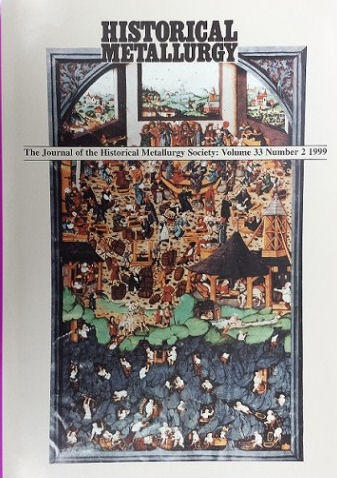Interested in all things to do with Anglo-Saxon metallurgy
Eleanor Blakelock

Main Interests
- Anglo-Saxon metallurgy
- Iron
- Gold (particularly surface treatments)
- Metallography
- Object manufacturing techniques, methods and thought processes
When deciding on an undergraduate archaeology degree I realised I was always more interested in the science side of archaeology than typologies or archaeological theory. My intention was to study all about geophysics and spend my career walking up and down fields all day trying to locate new sites, but considering the English weather I begun to have second thoughts. So when Gerry McDonnell during my degree gave me a second option ‘why not study ancient metallurgy’ I have to say I never looked back. I became fascinated by metallography and the microstructures of ancient metals. Following my degree at Bradford I went to the Institute of Archaeology at UCL and learnt even more about the analysis of a range of ancient materials including metallurgy. Finally I ended up back at Bradford University for my PhD to finish off the research on Anglo-Saxon and Viking iron knives started during my degree. I now work freelance writing up reports on slag assemblages, while also using my scientific background to invesigate object, manufacturing method through a variety of techniques.
After spending much of my time studying Anglo-Saxon and Viking iron, I started work at the British Museum’s science department. This involved a shift from iron to gold as I started working on the Staffordshire Hoard (a hoard of Anglo-Saxon gold and silver objects found in 2009). This privilege was only topped recently when I had the opportunity to analyse a number of Anglo-Saxon objects from the British Museum’s collections, including the stunning Sutton Hoo shoulder clasps. The work was follwed by another year spent studying the other metals in the Hoard at Birmingham. In 2018-2019 I became involved with the Rendlesham project studying the waste and objects from an Anglo-Saxon metal workshop associated with the high status settlement.
When I was first invited to sit on council I was just starting my PhD and was still a relatively new member of HMS. I am proud that I am one of the youngest members to have join HMS council to date. My first council meeting was a bit daunting but the other members of council soon made me feel welcome. Now after many years on council I understand more about the inner workings of the society and realise the amount of work and effort that many HMS members (both on and off council) put into the society to keep it working.
As the events officer I have organised numerous conferences for our members, and some of my best HMS moments have been at these conferences. I will never forget the discussion about iron manhole covers, street furniture and glass bottomed buses at Helmsley in Yorkshire, this has led to a Street Furniture themed event which will be held next year. I am always keen to hear from members about events you would like to see happen. My role as events officer also involves assisting and advising other event organisers. So I am also happy to assist members who are interested in setting up their own Historical Metallurgy meetings or conferences but are unsure how to start.
Research project pages
My favorite HMS journals/articles
Volume 34.2
Liquid steel in Anglo-Saxon England. I Mack, G McDonnell, S Murphy, P Andrews and K Wardley
When I studied at Bradford during my undergraduate, under the one of the authors of this paper I had my doubts, but since finding more evidence during my research I am convinced they had access to this resource.
A few of my publications
- Blakelock, E.S., 2017. Recycling in the Saxon period: results from the metals analysis of the Staffordshire Hoard, Historical Metallurgy Journal. 1-12
- Blakelock, E.S., 2016. Metallographic examination of early medieval knives from the UK, Historical Metallurgy Journal. 85-94.
- Blakelock, E.S., 2016. Never judge a gold object by its surface analysis: A study of surface phenomena in a selection of gold objects from the Staffordshire Hoard, Archaeometry 58 (6). 912-929.
- Blakelock, E.S. La Niece S. Fern, C. 2016. Secrets of the Anglo-Saxon goldsmiths: Analysis of gold objects from the Staffordshire Hoard. Journal of Archaeological Science 72. 44-56.
- Blakelock, E. S., M. Martinón-Torres, H.A. Veldhuijzen & T. Young. 2009. Slag Inclusions and the Quest for Provenance: an experiment and case study. Journal of Archaeological Science 36: 1745-1757.
- Blakelock, E.S. &Fern, C. 2019. Workshop practice. In: Fern, C., Dickingson, T. & Webster, L. (eds.) The Staffordshire Hoard: An Anglo-Saxon Treasure.






